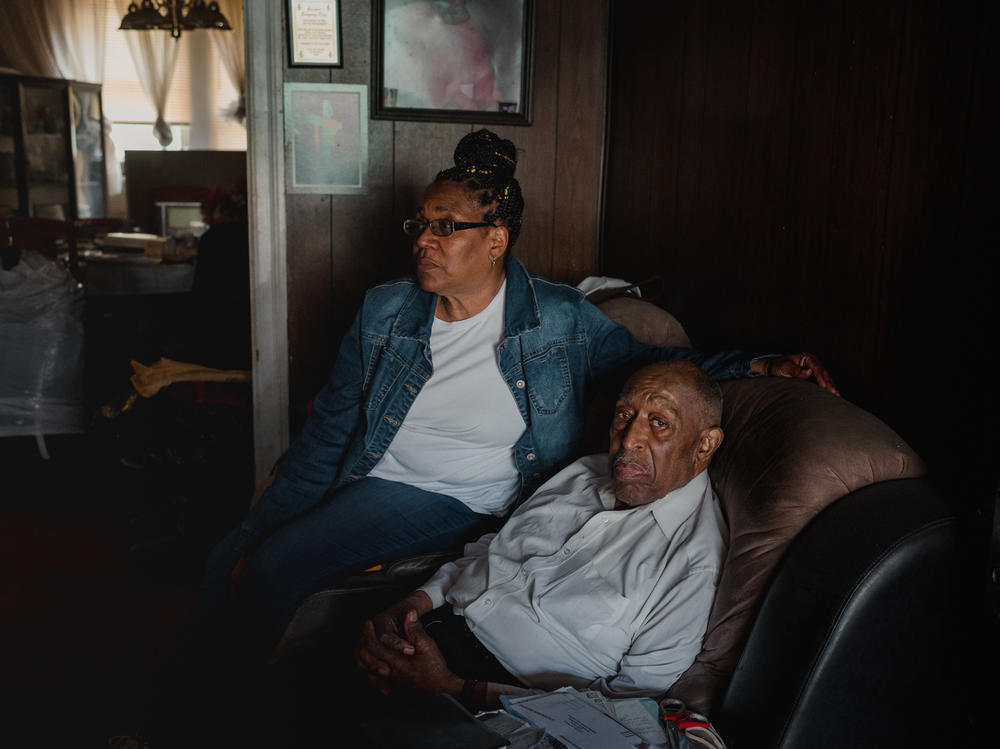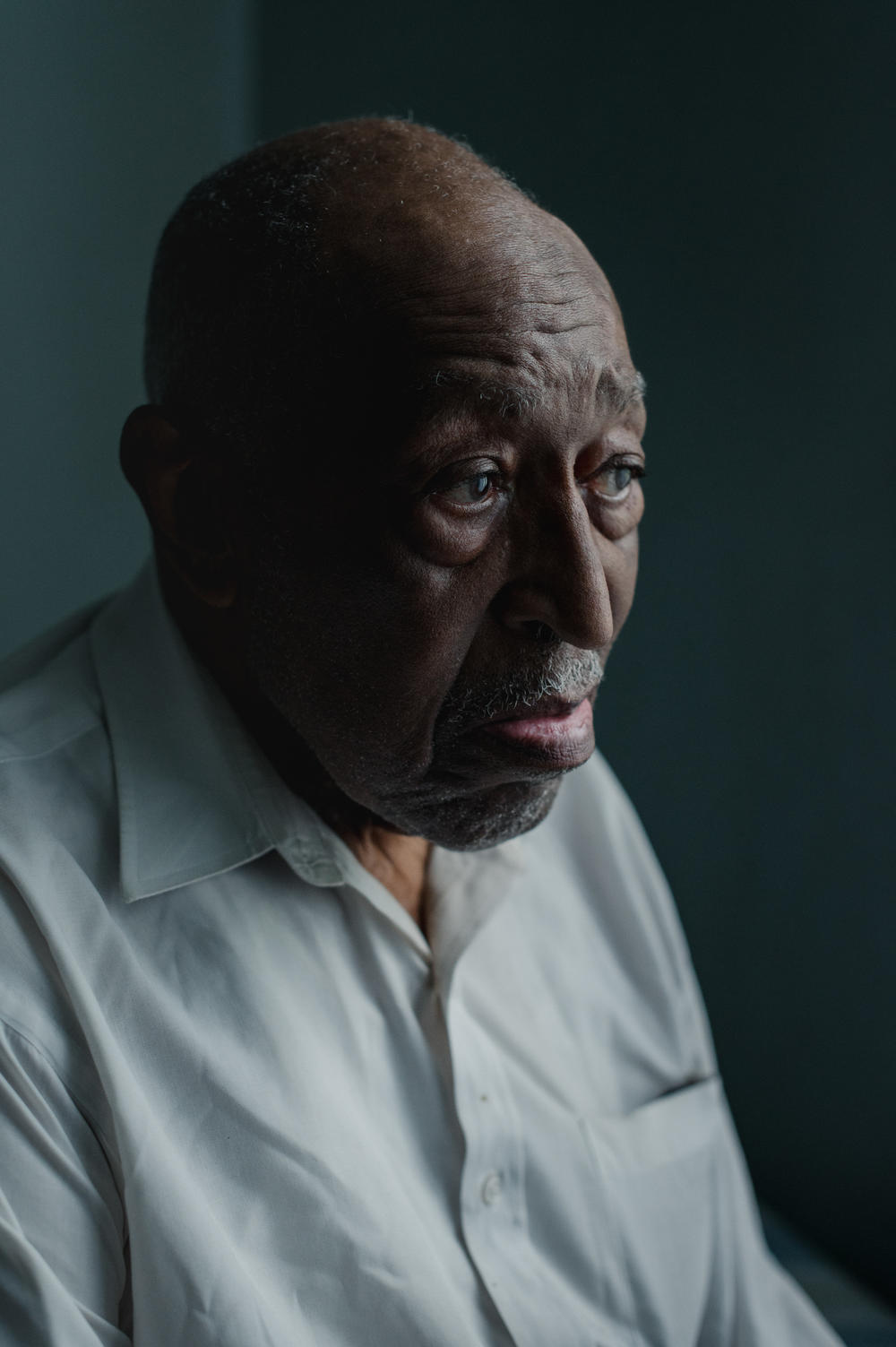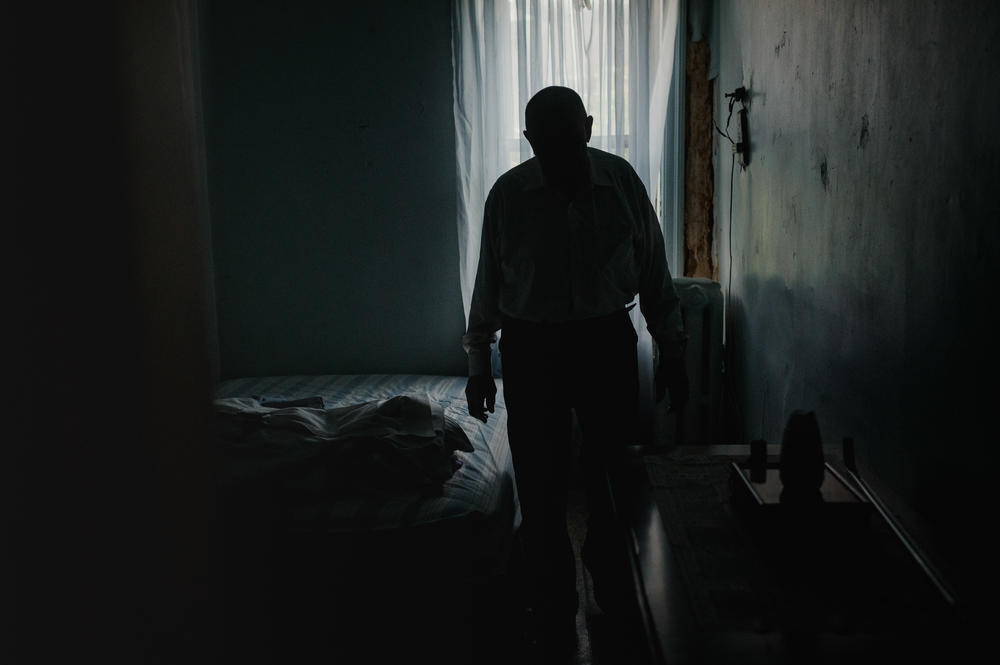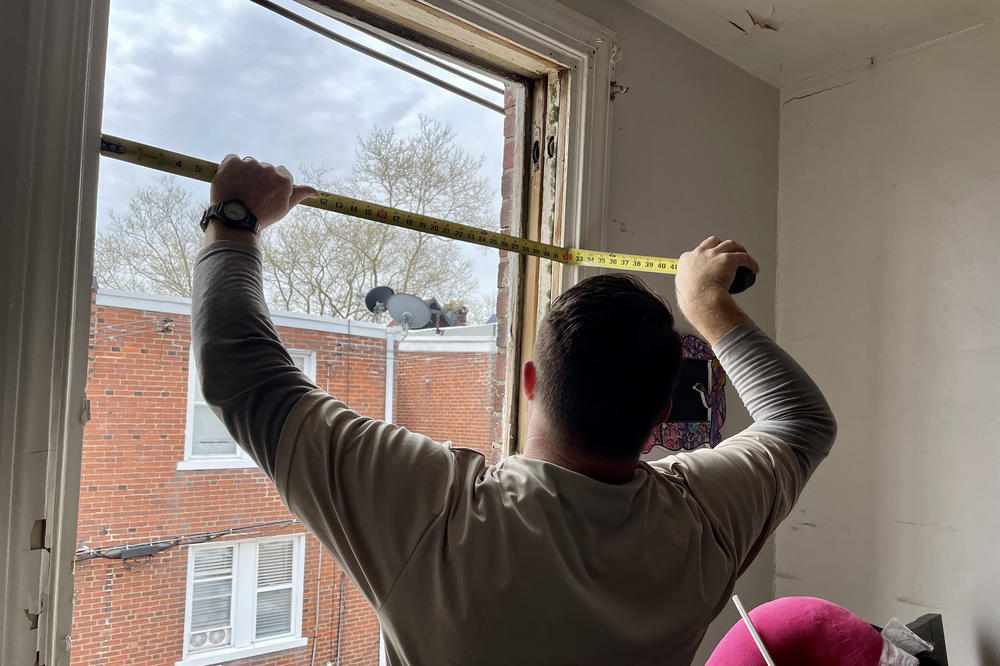Section Branding
Header Content
A low-income energy-efficiency program gets $3.5B boost, but leaves out many in need
Primary Content
Joseph Davis raised five children in the two-story row home he and his wife bought in the mid-1960s in North Philadelphia, near the automotive parts factory where he worked.
Now, Davis struggles to keep up the house on a fixed income. Plaster peels away from the walls on the second floor. Investors call and offer to buy it, but Davis, who is now widowed, plans to stay as long as he can.
"They want me to move out, [but] I feel good in my home," he says. Then he adds with a chuckle, "I'm 89 years old. I'll probably die here."
When he received a letter in the mail last year promoting a federally funded energy-efficiency program, his daughter, Veronica Stovall, filled out the application with him.
A key piece of the Biden administration's climate policy
That program, called weatherization assistance, received a $3.5 billion boost in last year's infrastructure law, with a goal of reducing greenhouse gas emissions while lowering energy costs for 700,000 low-income U.S. households over the next five years. That's in addition to the $334 million Congress appropriated for the Department of Energy's weatherization program in 2022. But due to federal regulations, whether that assistance will reach people like Davis is uncertain.
Weatherization is part of the Biden administration's climate strategy, which aims to hit net zero emissions by 2050. "We will be able to help households in disadvantaged communities, reduce carbon emissions, and generate good-paying local jobs in every corner of America," said U.S. Secretary of Energy Jennifer M. Granholm.
Weatherization assistance can cover anything from energy efficient lights to new windows to improved insulation. To be eligible, households must live at or below 200% of the poverty line, which for one person living alone is $27,180, and $55,500 for a family of four. The program gives preference to seniors, people with disabilities, and those with children. Every home that's retrofitted keeps 2.65 metric tons of carbon dioxide from being emitted each year, according to the Environmental and Energy Study Institute.
But under federal regulations, homes may be deferred because inspectors find that work would be ineffective because of significant repair needs, health or safety concerns, or exceedingly high repair costs. In theory, that means residents can reapply once they deal with the underlying issues. In reality, many can't afford to.
"It's almost looked at as a flaw or a void in this program"
In Davis' house, the weatherization assessment found substantial repair needs, including a leaky roof. His application was among those deferred. A subsequent estimate put the total cost at around $30,000, with the roofing bill alone over $13,000. Stovall has hired a local contractor to make some repairs, but the total cost is more than the family can afford.
Around half of all weatherization assistance applications in Philadelphia result in a deferral, according to the Energy Coordinating Agency, which carries out the program in Philadelphia.
"It's almost looked at as a flaw or a void in this program," says ECA executive director Steve Luxton. Philadelphia has a high rate of poverty, and Luxton says that means repair needs tend to pile up. His organization refers deferred homes to a subsidized repair program, however that program is often overloaded, according to Luxton. ECA has not been tracking how many are eventually able to fix their issues and come back.
By not doing more at the local level, he says, "We're turning our back on them really is the way I look at it."
Many needy homes across various states are rejected for assistance
This is not just a Philadelphia problem. Neither the U.S. Department of Energy nor the U.S. Department of Health and Human Services, which each fund weatherization assistance, tracks how many homes are deferred nationally. Federal surveys of the states and local agencies that carry out the work show that those who do track it report a wide range of deferral rates, from under 5% to more than 20%. A 2017 survey in Pennsylvania found about 36% of homes in the state are rejected. At one point, an agency in western Wisconsin found it was deferring nearly 60% of homes. (In each of these last two cases, that number spurred efforts at the local or state level to try to address it).
"It's not simply rural, or tribal, or located in various sections of the country... Every state, we're dealing with this problem," said David Bradley, CEO of the National Community Action Foundation, which lobbies on behalf of the groups that do weatherization.
The most common reasons for deferrals are structural issues, moisture or water, and mold, according to a survey of community organizations by the National Association for State Community Services Programs.
A large increase in funding can actually make the deferral rate higher. A review of weatherization's results, commissioned by the federal government, found that many agencies reported deferring more applicants when the program received a large infusion of cash during the Great Recession. Causes included stricter health and safety regulations, and the pressure to rapidly weatherize more homes, which "may have limited time previously spent on attempting to bundle resources necessary to address housing rehabilitation needs."
That same survey found that groups the program explicitly prioritized — households that contained elderly persons, children, and persons with disabilities — were deferred at higher rates during the period evaluated than single parent households.
Officials are working on fixes to lower deferrals
Deferrals are getting more attention from agencies and lawmakers. The Department of Energy will begin tracking them and their reasons starting in spring 2023. DOE is also in the early stages of rule changes that would allow for more flexibility in how the program is implemented, according to an agency spokesperson.
The Biden Administration has also taken steps to address deferrals. The President's 2022 budget proposed funding pre-weatherization repairs, and Congress set aside $15 million to do just that, though this money cannot be used for homes that will be weatherized with funds from the infrastructure law.
This year, a bipartisan group of senators also introduced the "Weatherization Assistance Program Improvements Act," a bill that would establish a repair fund just for these homes, funded at $65 million for five years. In addition, the bill would also raise the federal cap on the average weatherization cost per home.
Those changes are important, says Meg Power, senior policy advisor at the National Community Action Foundation, because the current system can incentivize fixing up the easiest houses first.
"Millions of homes were weatherized... So we're down to houses that are in real trouble, physically, structurally," she said. "The worst houses have been left behind."
If the repair fund bill passes, it would be a gamechanger, says Bradley.
Without such a holistic solution, "You're not really addressing the environmental injustice, the disparity on the lowest of the low-income," he says. However, Bradley estimates the actual repair needs nationwide are likely several times higher than the amount in the bill. The legislation has yet to advance out of committee, and the independent legislative tracker GovTrack gives it a slim chance of passing. In addition to unaddressed deferrals, Bradley says difficulties hiring enough staff in the current labor market could make it harder to hit the Biden Administration's weatherization goal.
Some local agencies have tried tackling the deferral issue by braiding together different funding
The deferral issue is so well known that some states and local agencies have tried tackling it on their own. By bundling together different funding sources, such as the repair funds from the U.S. Department of Housing and Urban Development or U.S. Department of Health and Human Services, they can keep more homes in the program and undertake bigger projects. This approach is piecemeal, and requires siloed government agencies and nonprofits, often with slightly different aims, to work closely together, according to Power. But such local efforts give a sense of how a holistic home repair program would work.
Rezephyr Young, who goes by Cookie, is a 76-year-old retired hotel housekeeper. She recently got new windows, thanks to one such initiative in Philadelphia called Built to Last. It combines expertise and funding from more than a dozen different organizations, including utility companies, government agencies and nonprofits, with the goal of comprehensively repairing 80 to 100 high-need homes.
In Young's case, before she could qualify for weatherization assistance, which paid for the windows, she needed a new roof, and to have structural issues in her kitchen fixed.
Of the price tag for the repairs, she says, "I'm not even going to think, I just thank God I'm getting it done."
After NPR asked questions about Davis' housing repair needs, coordinators said they would look into including him in the Built to Last pilot. But that's not a solution for the thousands of homes in similar straits across the country.
Copyright 2022 NPR. To see more, visit https://www.npr.org.




